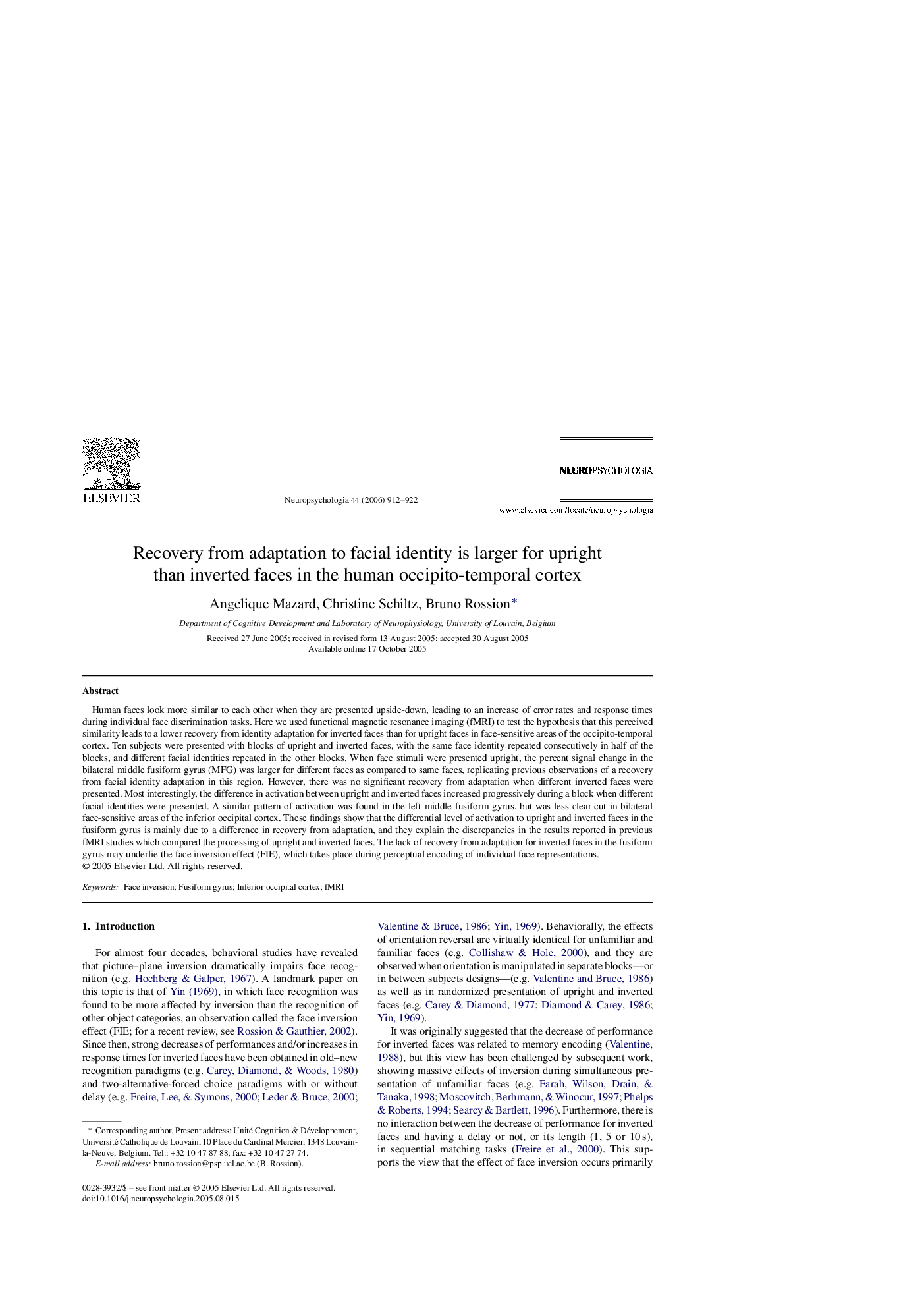| کد مقاله | کد نشریه | سال انتشار | مقاله انگلیسی | نسخه تمام متن |
|---|---|---|---|---|
| 945608 | 925796 | 2006 | 11 صفحه PDF | دانلود رایگان |

Human faces look more similar to each other when they are presented upside-down, leading to an increase of error rates and response times during individual face discrimination tasks. Here we used functional magnetic resonance imaging (fMRI) to test the hypothesis that this perceived similarity leads to a lower recovery from identity adaptation for inverted faces than for upright faces in face-sensitive areas of the occipito-temporal cortex. Ten subjects were presented with blocks of upright and inverted faces, with the same face identity repeated consecutively in half of the blocks, and different facial identities repeated in the other blocks. When face stimuli were presented upright, the percent signal change in the bilateral middle fusiform gyrus (MFG) was larger for different faces as compared to same faces, replicating previous observations of a recovery from facial identity adaptation in this region. However, there was no significant recovery from adaptation when different inverted faces were presented. Most interestingly, the difference in activation between upright and inverted faces increased progressively during a block when different facial identities were presented. A similar pattern of activation was found in the left middle fusiform gyrus, but was less clear-cut in bilateral face-sensitive areas of the inferior occipital cortex. These findings show that the differential level of activation to upright and inverted faces in the fusiform gyrus is mainly due to a difference in recovery from adaptation, and they explain the discrepancies in the results reported in previous fMRI studies which compared the processing of upright and inverted faces. The lack of recovery from adaptation for inverted faces in the fusiform gyrus may underlie the face inversion effect (FIE), which takes place during perceptual encoding of individual face representations.
Journal: Neuropsychologia - Volume 44, Issue 6, 2006, Pages 912–922